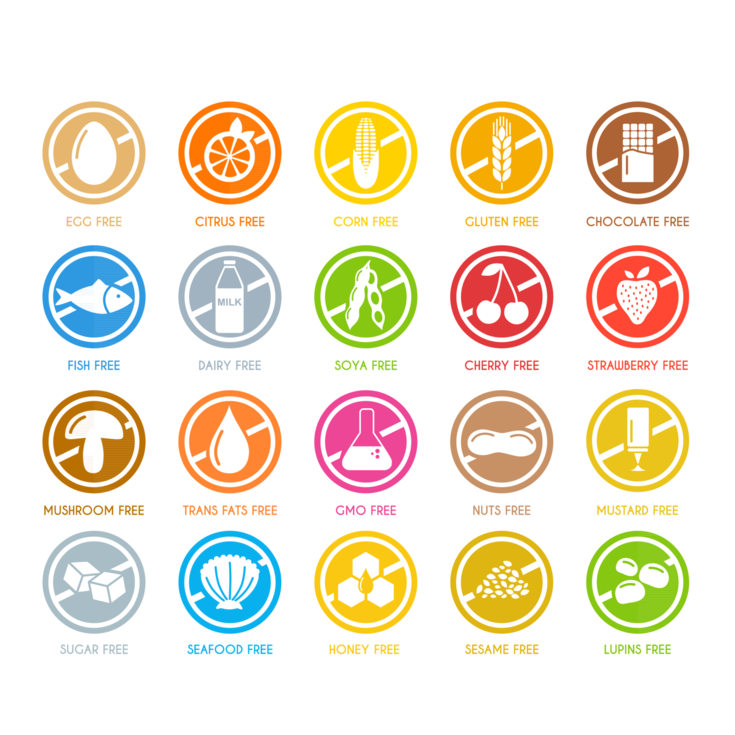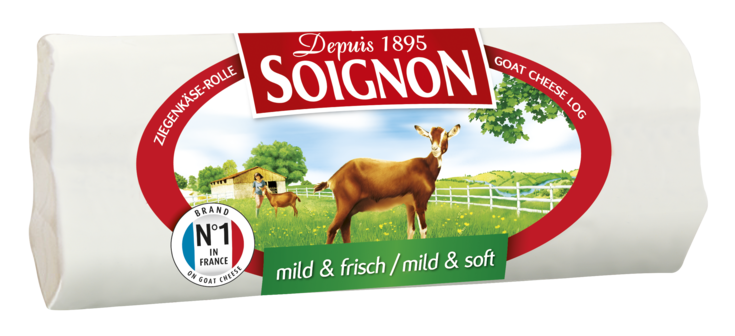
Can I keep consuming dairy products if I'm lactose intolerant?
Contrary to popular belief, lactose intolerance and da1
Confusion between milk protein allergies and lactose intolerance is a regular occurrence, as both are associated with the same food: milk. Looking beyond the food itself, digestive symptoms can often be similar for both conditions. However, there are major differences in terms of mechanisms of action, seriousness of the symptoms and as a result, how the condition is managed. Read on for key information and practical recommendations for telling the difference between an allergy and an intolerance.
A food allergy is a reaction from the immune system which is triggered shortly after eating a certain food. A malfunction in the immune system causes a defensive reaction to substances which seem inoffensive but are wrongly recognized as being an intruder. These intruders are generally proteins, which are naturally present in foods. These could be proteins in eggs, peanuts, or milk, such as in the case of a Cow Milk Protein Allergy (CMPA).
Goat milk also contains proteins which could cause allergies. Incidentally, the main proteins behind CMPA are very similar to those present in goat milk. As a result, over 90% of children with CMPA are also allergic to the proteins in goat milk1. This is known as cross-reactivity.

With a milk protein allergy, respiratory symptoms (runny nose, wheezing) or skin problems (rash) will be displayed in the majority of cases.
A food intolerance is generally due to an enzyme deficiency. The enzymes present in our body break down the nutrients that make up the foods that we eat (proteins, fats, carbohydrates). If there is a deficit, the body can have trouble digesting a particular nutrient, and digestive problems (such as stomach pain and diarrhea) can appear anywhere between 30 minutes and a few hours after ingesting the food.
More specifically, lactose intolerance is linked to a deficiency in an enzyme called lactase, which digests the main sugar in milk — lactose. This deficiency leads to unpleasant digestive symptoms, such as bloating.

With lactose intolerance, ingested lactose is not broken down by lactase and is found in the colon completely intact, where it is fermented by the gut flora. This fermentation then produces intestinal gases, which in turn cause unpleasant symptoms (bloating, flatulence, and/or diarrhea, etc.).
In both cases, it is essential that you get a definitive diagnosis from a doctor in order to:
A milk protein allergy must be diagnosed by a specialist allergist. Their diagnosis will involve asking a series of questions, an in-depth clinical examination, and a study of your food habits. This will be followed by skin tests and possibly a blood sample.

Diagnosing a lactose intolerance is done under medical supervision using a lactose tolerance test. This is carried out on an empty stomach and by measuring the amount of hydrogen exhaled (which reflects the amount of intestinal gases produced as a result of the fermentation of lactose).
With a Cow Milk Protein Allergy (CMPA), even a tiny amount of cow milk protein can trigger a reaction. A strict diet aiming to eliminate any food that may contain cow's milk proteins is therefore essential.
This applies directly to cow's milk and dairy products derived from cow's milk, as well as any other food where milk proteins are listed in the ingredients. It is therefore extremely important for people who have CMPA to carefully read the labels of food products they consume.

In addition, people who are allergic to cow milk proteins must not replace cow milk with goat milk or sheep milk without medical advice, as "cross-reactivity" can occur.
However, certain food allergies do spontaneously disappear as age increases. This is the case for the majority of allergies to milk, eggs, and fish. As a result, allergies to cow's milk proteins in the majority of young children disappear once they reach the age of three. Dairy products can then be re-introduced gradually under medical supervision.
With lactose intolerance, a strict diet which cuts out dairy products completely is not necessary, and there are several reasons for this:

| Milk protein allergy | Lactose intolerance |
|---|---|
| An allergic reaction to milk proteins | Inability to digest lactose, the type of sugar in milk |
| Involves the immune system | Does not involve the immune system |
| Digestive symptoms as well as respiratory and skin problems | Digestive symptoms ONLY |
| A small amount of milk proteins can trigger an allergic reaction | Small amounts of lactose can generally be tolerated |
| Strict elimination diet | A certain number of dairy products can be consumed per day, preferably spaced throughout the day |
In both cases, there are two very important points to remember:
To find out more, take a look at our dedicated article: "Can I keep consuming dairy products if I am lactose intolerant?"
1 Bellioni-Businco B., Paganelli R., Lucenti P., Giampietro P.G., Perborn H., Businco L., 1999. Allergenicity of goat's milk in children with cow's milk allergy. J Allergy Clin Immunol., 103(6):1191-1194.